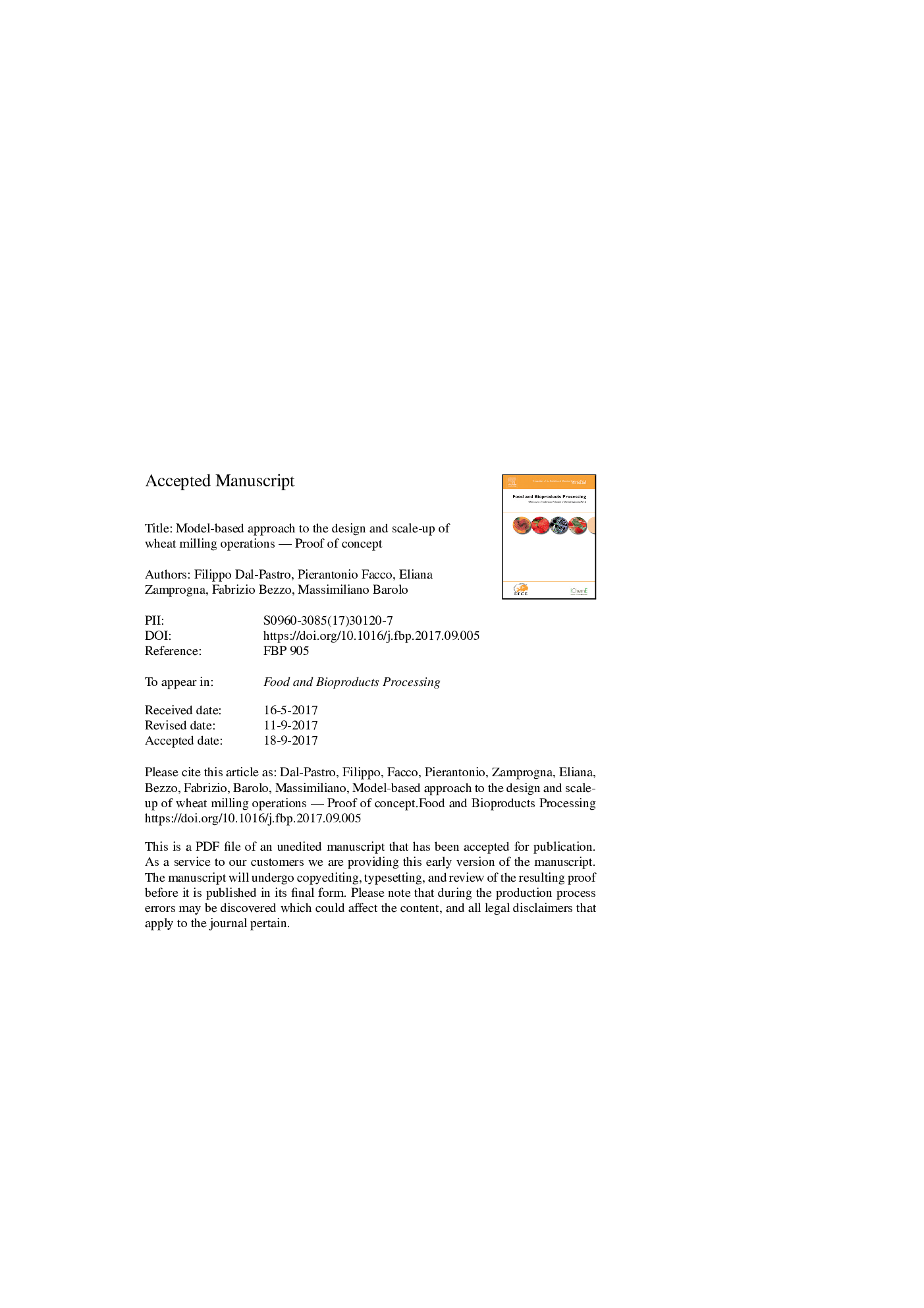| کد مقاله | کد نشریه | سال انتشار | مقاله انگلیسی | نسخه تمام متن |
|---|---|---|---|---|
| 4752916 | 1416463 | 2017 | 30 صفحه PDF | دانلود رایگان |
عنوان انگلیسی مقاله ISI
Model-based approach to the design and scale-up of wheat milling operations - Proof of concept
ترجمه فارسی عنوان
رویکرد مبتنی بر مدل به طراحی و گسترش عملیات فرزکاری گندم - اثبات مفهوم
دانلود مقاله + سفارش ترجمه
دانلود مقاله ISI انگلیسی
رایگان برای ایرانیان
کلمات کلیدی
ترجمه چکیده
در این مطالعه اثباتی مفهومی، ما مشکل پیدا کردن شرایطی را که در آن یک فرایند آسیاب کردن گندم صنعتی باید به منظور ارائه یک محصول با کیفیت اختصاص داده شده از یک گندم داده شده مورد توجه قرار گیرد. ما پیشنهاد می کنیم که مدل های ریاضی برای کمک به میلر در تعیین شرایط عملیاتی مورد نیاز استفاده شود. ایده اصلی ما کاوش این است که اکثر آزمایشات را از تجهیزات صنعتی در مقیاس کوچک به سمت مقیاس کوچک جابجا کنیم که در آن داده ها به سرعت و با هزینه پایین تر به دست می آیند. استفاده از یک آسیاب غلتکی صنعتی، که اختلاط خردایش عامل متغیر تعیین می شود، به عنوان تست تست برای ارزیابی امکان سنجی روش پیشنهادی استفاده می شود. مجموعه گسترده ای از داده های حاصل از آزمایش در یک کارخانه کوچک با استفاده از یک مجموعه داده از کارخانۀ صنعتی به منظور طراحی یک مدل آماری چند متغیره بر اساس متغیرهای پنهان استفاده می شود که سپس برای یافتن شرایط عملیاتی مورد نظر، معکوس می شود. نتایج نشان می دهد که رویکرد پیشنهادی قابل قبول است و زمانی که مجموعه داده های صنعتی در مقیاس کوچک محدود می شود، به طور خاص موثر است. همچنین نشان داده شده است که برای تشخیص خوراک گندم می توان از طیف های مادون قرمز استفاده کرد.
موضوعات مرتبط
مهندسی و علوم پایه
مهندسی شیمی
بیو مهندسی (مهندسی زیستی)
چکیده انگلیسی
In this proof-of-concept study, we consider the problem of finding the conditions at which an industrial wheat milling process should be operated to provide a product with assigned quality from a given wheat variety. We propose an approach where mathematical models are used to assist the miller in determining the required operating conditions. The basic idea we explore is to move most of the experimentation from the industrial-scale equipment to a small-scale one where data can be obtained more quickly and at an inferior cost. The operation of an industrial roller mill, whose milling gap is the operating variable to be determined, is used as a test bed to assess the feasibility of the proposed methodology. An extended set of data deriving from experimentation in a small-scale mill are used jointly with a dataset from the industrial mill to design a multivariate statistical model based on latent variables, which is then inverted to find the desired operating conditions. The results show that the proposed approach is viable and is particularly effective when the industrial-scale dataset is limited. It is also shown that near infrared spectra can be effectively used to characterize the wheat feed.
ناشر
Database: Elsevier - ScienceDirect (ساینس دایرکت)
Journal: Food and Bioproducts Processing - Volume 106, November 2017, Pages 127-136
Journal: Food and Bioproducts Processing - Volume 106, November 2017, Pages 127-136
نویسندگان
Filippo Dal-Pastro, Pierantonio Facco, Eliana Zamprogna, Fabrizio Bezzo, Massimiliano Barolo,
